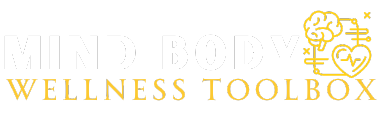
Diagnosis in mental health is a critical and contentious area, lacking clear biomarkers that are present in other medical specialties. The reliance on history-taking and observation sets psychiatry apart, making it unique in its diagnostic methods.
Diagnostic categories like “depression,” “schizophrenia,” and “PTSD” serve various purposes, from guiding treatment to aiding in research and therapy development.
However, traditional diagnostic manuals like DSM-5 have faced significant criticism, both from outside the profession and within the mental health science community. Questions about the validity and usefulness of current diagnostic systems have fueled discussions about the need for new frameworks.

A way out of the maze?
Exploring New Diagnostic Frameworks
Recent advancements in mental health science have introduced new classification systems like the Research Domain Criteria (RDoC) and the Hierarchical Taxonomy of Psychopathology (HiTOP). These frameworks aim to provide more evidence-based and structured approaches to understanding mental health conditions.
RDoC focuses on neuropsychological domains, while HiTOP organizes symptoms and entities based on empirical evidence rather than subjective opinions. These new approaches offer potential enhancements to traditional diagnostic methods.

Through a glass, darkly.
Challenges and Opportunities
While new diagnostic frameworks show promise, integrating them into current practices poses challenges. The coexistence of multiple classification systems requires careful consideration and coordination to ensure seamless communication and alignment of approaches.
The future of psychiatric diagnosis may involve a diverse array of classification systems tailored for specific contexts and needs, rather than a singular universal standard.

Not coming soon: one ring to rule them all.
Considerations and Recommendations
Understanding the evolution of psychiatric diagnosis and staying informed about emerging frameworks is vital for mental health professionals. Adapting to and adopting new tools and concepts can enhance diagnostic accuracy and treatment outcomes.
As the field progresses towards a multi-framework approach, the integration of different systems will be crucial for effective collaboration and holistic patient care.

Needed: a Babel fish.
Personal Disclosure
The views expressed in this blog are personal and do not represent those of any organization. The exploration of psychiatric diagnosis frameworks is a dynamic and evolving field that requires continuous assessment and adaptation.
Resources:
Primary Source:
Aftab A, Banicki K, Ruffalo ML, Frances A (2024) Psychiatric Diagnosis: A Clinical Guide to Navigating Diagnostic Pluralism. The Journal of Nervous and Mental Disease 212(8) 445-454 https://pubmed.ncbi.nlm.nih.gov/39079000/ [PubMed abstract]
Additional References:
Cacciatore J, Frances A (2022) DSM-5-TR turns normal grief into a mental disorder. Lancet Psychiatry 9 e7 https://www.thelancet.com/journals/lanpsy/article/PIIS2215-0366(22)00150-X
Cross-Disorder Group of the Psychiatric Genomics Consortium (2013) Identification of risk loci with shared effects on five major psychiatric disorders: a genome-wide analysis. Lancet 381 1371–1379 https://www.thelancet.com/journals/lancet/article/PIIS0140-6736(12)62129-1














